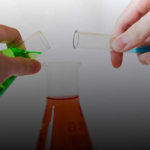Section 1
Preview this deck
Total mass of living organisms in a given area.
Front
Active users
0
All-time users
0
Favorites
0
Last updated
6 years ago
Date created
Mar 1, 2020
Cards (60)
Section 1
(50 cards)
Total mass of living organisms in a given area.
biomass
movement of Earth's crust
plate tectonics
The shape of the Earth's surface and the way its physical features are arranged; positions and elevations.
topography
Energy of motion (roller coaster increases kinetic energy as it comes down the hill)
kinetic energy
New crust is formed at divergen plate boundaries (sea-floor spreading)
mid-ocean ridge
Rock formed from cooling of magma or lava
igneous
Not allowing to pass through.
insulator
Evidence of a new substance; observed when substances interact such as flammability and rusting.
chemical properties
Energy that is stored (stress in a fault zone, roller coaster at the top of a hill).
potential energy
Relationship between organisms in which one or both benefit.
symbiosis
F = M X A; If an object is acted on by a net force, the change in velocity will be in the direction of the force.
Newton's Second Law of Motion
The tendency of a substance to undergo chemical changes.
reactivity
Genetic trait that is represented with a capital letter and will always show if it is present.
dominant trait
The range of electromagnetic waves placed in a certain order.
electromagnetic spectrum
The measure of an element's ability to combine with other elements, dictated by the number of electrons in the outermost shell.
valence
One or more elements in the same place at the same time, but not chemically combined (like a tossed salad).
mixture
The measure of how tight particles of a substance are packed (mass per volume).
density
Allowing to pass through.
conductor/conductivity
Rivers of hot or cold water within the ocean caused by planet rotation, wind, temperature and salinity.
ocean currents
Genetic makeup; written with symbols (Tt, TT, tt)
genotype
The atmosphere traps solar radiation, because of gases such as CO2, methane and water vapor.
greenhouse effect
More harmful UV rays hit earth due to a gradual decrease of the layer of ozone (upper atmosphere); caused by products using chlorofluorcarbons or cfc's.
ozone depletion
Rock formed under heat and pressure
metamorphic
Physical traits (tall/short)
phenotype
The measure of speed and direction.
velocity
Worldwide climate change mainly due to increase in CO2 levels
global warming
Can be dissolved.
solubility/soluble
Water pressure against a cell wall of a plant cell (firm leaf/wilted leaf)
turgor pressure
Sinking of the Earth's surface (depletion of groundwater/divergen boundary)
land subsidence
Substances moving from areas of greater concentration to areas of less concentration until equilibrium is reached. (examples: heat moves from warmer to cooler areas; gases, nutrients, water moves across a semipermeable membrane)
diffusion
The total amount of force acting on an object (all the individual forces are added together).
net force
The way an organism monitors its needs and maintains equilibrium.
feedback mechanisms
Takes in heat during a chemical reaction, will feel cold (ice pack)
endothermic
Having the same allele for a trait (TT, tt)
homozygous
An objects resistance to a change in motion.
inertia
Rock formed from sediments compacting and cementing
sedimentary
The distance an object travels divided by the time it takes to travel that distance.
average speed
A series of changes in the ecosystem that restores equilibrium over time.
succession
Moving sediment
erosion
Releases heat during a chemcial reaction, will feel warm (decomposition, hand warmers)
exothermic
Force that will cause a change in an objects motion.
unbalanced force
A graph showing the relationship between time and distance.
distance-time graph
Two or more elements chemically combined.
compound
Transfer of thermal energy by movements of a fluid. (convection currents)
convection
Creates soil in primary succession (lichen/moss) first species to appear.
pioneer species
Transfer of energy by electromagnetic waves (light waves)
radiation
What you can observe without the material changing to a new substance (melting, freezing, getting smaller)
physical properties
Molecules expand as more energy is added (alcohol goes up the thermometer showing temperature as heat is added).
thermal expansion
Having both the dominant and recessive allele for a trait (Tt)
heterozygous
The change in an objects speed and/or direction; speeding up slowing down, or change in direction.
acceleration
Section 2
(10 cards)


